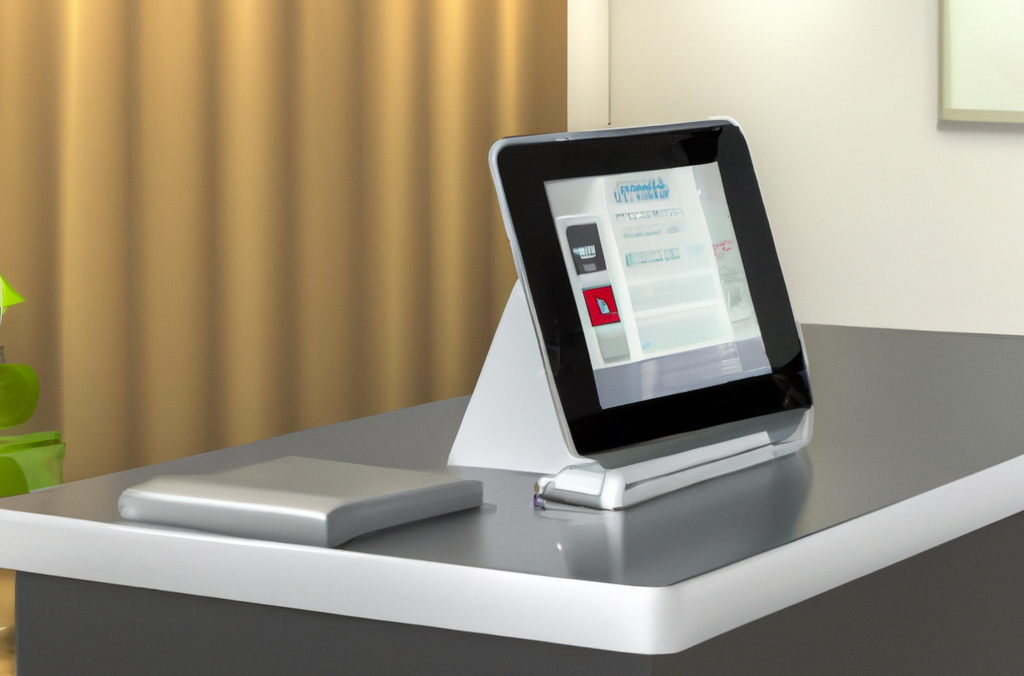Building Your Top of Funnel: How to Capture More Leads | Greetly

If you are in business, you’ll already know that one of the cornerstones of marketing is to capture leads. Recording the contact information of any potential customers is the start of good lead marketing. Finding ways to capture more leads is how your business increases its marketing capability and, with proper follow-through, increasing revenue along with it.
Lead marketing also goes far beyond only potential customers. Businesses not only have to market to customers, but to potential employees, potential business partners, and others. You never know who might turn into your newest customer or superstar employee. Understanding why and how to capture leads – and how not to – can take your business to the next level.
Why Get Leads
Oh, No Big Deal. It’s Just the Lifeblood of Your Business
“But isn’t marketing just advertising?” a few less-informed people might say. To which you’ll respond, “Heck no! Advertising is just a starting point.”
Sure, you can put an ad on the radio, in a newspaper, or on social media, and it is possible the customer might – MIGHT – call you up and just buy your product outright. However, most simply ignore advertising. Even among those that don’t, most will often find your website, browse a bit, look over your Facebook Page, and then swipe left, never to be heard from again.
Those stealthy website visitors can slip away so easily. Without lead capture, you’ll never:
- Find out what brought them to your site in the first place.
- Learn what product or service they were interested in.
- Be able to nurture a relationship with them.
The same holds true for any brick-and-mortar location. A new person who walks into a store or service location and walks back out again before even saying, “hello” is a lost opportunity. Ditto any visitors who come to a social or coworking event at the office.
Capturing leads makes an ongoing relationship possible. Just like you can’t call the attractive person you met at happy hour if you didn’t bother to get a phone number, your business can’t foster a relationship with a person you cannot contact.
 Getting Leads Means Knowing Your Customers
Getting Leads Means Knowing Your Customers
Most people don’t like to just hand over the contact information. Giving out your cell phone number or email address can mean junk texts, and annoying phone calls and spam. While we all understand the importance of marketing, we often don’t like being the target of marketing, especially bad marketing.
Both getting and then following up on leads requires understanding your customers. We’re not talking basic demographics here, but rather motivations and behaviors. Demographics may play a role in those behaviors; if your target market is older, they may be less likely to pay attention to social media.
Put yourself in your customers’ shoes to answer the following questions:
- Where do they spend their time? On social media or in the coffee shop?
- Where do they get their information?
- What pain points do they have that your product or service addresses?
- Is the information you have valuable enough that they might provide contact information to receive it?
- Are there other free tools or items you could offer to draw them in?
- What are the different touch points they encounter with your business?
- What will annoy them and cause them to abandon your brand?
Once you know who your customer is, what attracts them and what their needs are, its time to focus on getting those pertinent leads.
How to Get Good Leads
Getting quality leads is a multi-tiered process. There is no one way to get quality leads and using as many avenues as possible casts a wide net, resulting in more leads overall.
Lead generation means getting everyone’s contact information, everywhere, in all situations, and in as many methods as you can. It means getting as much information as you can to know how best to follow up on those leads. No matter how you do business, whether in person or online, using all the tools you have available will ensure interested people don’t fall through the cracks.
Let’s discuss some of the very valuable tools available for lead generation.
Getting Leads in Person
For many businesses, employees encounter new people on almost a daily basis. New vendors show up at the office door touting the latest office products. Prospective employees come for interviews. Customers and clients, family members and friends, business partners and more all enter your building for meetings, social events. Your employees will spend time outside the building at events held by other businesses, networking events, Chamber of Commerce events.
(Hate networking? Here are 9 tips to make the most of networking events — even if you hate them!)
Even for those who primarily deal with online customers, chances are you’ll meet people in your day-to-day life who could benefit from knowing more about your company, product and services.
Quite simply, there are a plethora of lead possibilities in our daily encounters. How do we capture them?
- Business Cards: All employees should be trained to ask those they encounter for business cards. Even while at the coffee shop, if they have a conversation about the business with the person next to them in line and there is interest, they should ask for a business card. Jotting a few notes on the back of the card about the conversation and the person’s interests then becomes the first entry in the Contact Relationship Management (CRM).
- Surveys and Intake Forms: At trade shows or other events, asking those who stop by the booth to complete a survey about their interests is an obvious grab for a lead. People know this, and those who sign up are the most likely to be interested in your products or services. Thus, they are most receptive to follow-up calls. Questions on the form might include:
- What questions do you have about our company or product?
- What products are you most interested in? (Check all that apply).
- How can we best follow up with you?
- Visitor Registration: Many locations keep a log of those who visit the place of business. Those who use a visitor check-in kiosk capture the information of every non-employee who walks through the door. A really great system will allow the visitor to state their reason for visiting and who they are visiting. Some examples of how this might be helpful:
- A global recruiting firm uses a candidate check-in kiosk to capture the information of all who enter the office. They send candidates a link to current jobs and then capture more information about their candidates to help them find a better job match.
- Visitors to a social or coworking event enter their information. The company can follow up with the visitors, thanking them for attending and asking if they have any questions. If the event was primarily for marketing, they can include a coupon or a survey.
- Those coming to meet with a specific employee will be noted and can be earmarked for appropriate follow-up messages, such as thank you notes, invitations to relevant events, and more.
 Attend Relevant Industry Events: When your business has a presence at trade shows, conventions and other industry-related meetings — or even just local events and Meetups — you are bound to get leads. The leads may be potential clients or business partners. Presenting at such events puts you right at the front of the room, literally, and places a spotlight on your business.
Attend Relevant Industry Events: When your business has a presence at trade shows, conventions and other industry-related meetings — or even just local events and Meetups — you are bound to get leads. The leads may be potential clients or business partners. Presenting at such events puts you right at the front of the room, literally, and places a spotlight on your business.
Asking those in attendance at your presentation to complete a survey is one way to get leads. Another is to make sure you get a business card from every person who stops to talk with you after the presentation.
More advanced than just attending, volunteer to be a speaker or panelist. This instantly positions you and your organization as having credibility. If you say something interesting or thought-provoking, audience members will approach you to start a conversation.
Getting the leads of those you meet in person may be one of the most effective ways. You can start the conversation right from the beginning, learning immediately what it is they want or need and where their interests lie.
Getting Leads Online
More and more, companies are turning to their online presence to reach their customers and to allow their customers to reach them. This is not a move they are making without research to back it up. In today’s world, potential customers, job candidates, and business partners will research your company online before ever making the first move.
How you handle your online presence and scour the internet for leads is a vital piece of your marketing strategy.
- Inbound marketing: Perhaps the most effective strategy of all is using your website to draw customers to you. Inbound marketing is exactly that; it is the process of getting the customers to come to you through your website. SEO (Search Engine Optimization) is a top concern of businesses of all sizes and is the starting point for inbound marketing efforts. Inbound marketing has a three-pronged approach:
- Attract: The first prong is to attract your customers. This is done by creating high-quality design and content on your website. Websites need to be intuitive to use and informative. Search engine algorithms search for relevance to keywords. Customers seek credible, relevant information.
- Engage/Convert: The second prong is to get your website visitors to consciously engage with your content. This could occur in a number of ways. If you have a blog, they may be invited to sign up in order to comment on the blog. Your website might provide valuable analysis tools, but the tools are only available to those who sign in for access. A sample of your monthly newsletter might be on the site, and visitors can add themselves to your mailing list to receive the full version.
- Delight: Delight is the term inbound marketing experts use to describe nurturing the ongoing relationship with your customer/contact. Those newsletters your customer signed up for? They better continue to contain quality content. Emails you send may need to surprise them with a special offer or ask for their opinion.
- Social Media: Another avenue for generating leads is through social media. Engaging ads and posts definitely make a difference in a company’s marketing efforts. Aside from advertising and posting, however, companies need to make the effort to monitor what others are saying about them on social media. Doing so allows companies to:
- Engage in the conversation about their own brand.
- See if industry or media influencers are talking about them and what they are saying.
- Thank (and maybe reward) those who are saying positive things and offering good reviews.
- Build trust with potential customers by answering questions directly.
- Offer links and information that might get people in your inbound marketing funnel.
You might remember to monitor your own social media presence, but the idea of trying to monitor what others are saying might be daunting. There are a number of tools that can help you with this overwhelming task. Monitoring allows you to reap the rewards of inviting those already in the conversation to take a closer look at your company.
- Linkedin: It may seem like Linkedin is the black sheep of the social media family. It reality, it may be the quiet, overlooked uncle who is secretly programming the next breakthrough for natural disaster response teams. Those in the know are impressed, but those who aren’t, well, aren’t. The fact is that top executives from most Fortune 500 companies are on Linkedin. According to experts, regularly posting content, updating your profile, and connecting with others generate more B2B leads than any other platform. Ads on Linkedin can be more specifically targeted to the audience most likely to be responsive. Treating your Linkedin profile just like you treat your website – updating regularly and keeping SEO in mind – will yield dividends.
What Not to Do
Of course, lead generation can lead to all sorts of bad behavior. A few pitfalls to avoid:
- Don’t buy leads: When you buy leads, you are likely getting a list of people who
- A) wouldn’t appreciate the fact their information is being sold,
- B) don’t really want your product and
- C) especially don’t want your marketing. Most lists being sold are not high-quality leads and it would be like fishing for tuna in a freshwater lake. Very few lists are quality leads.
- Don’t spam people: Don’t send so many emails or text messages that within only a day or two they are unsubscribing from your lists. Don’t send poor-quality messages. Send only quality content you’d like to receive yourself. Engage your customers, enticing them with a drinking fountain, not a fire hose.
- No means no: Once someone asks you to disengage, either by asking to be removed from a calling list, unsubscribing from a newsletter, or otherwise making it clear that they no longer want to hear from you, respect that. Persisting after receiving such messages is not only rude and obnoxious, but it could damage your reputation in the long run if they start telling their friends or trolling you on social media.
Conclusion – Get Good Leads, Get Them Engaged
In the end, getting leads is just the start of nurturing a relationship. Just like when meeting someone new at a local restaurant, you want your business efforts to be attractive enough that they will give you their phone number on their own accord, or be willing to give it to you when you ask.
Once you have the contact information, it is up to you to be engaging without being overwhelming, to be interesting without information overload, and to be enticing without being overbearing. Create a customer/contact relationship that benefits both parties.




